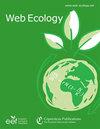合成四倍体的生产作为多倍体研究的工具
IF 2.3
3区 环境科学与生态学
Q2 ECOLOGY
引用次数: 20
摘要
摘要传统上,多倍体被认为是一种介导生态分化的现象;然而,基因组复制的适应性价值很少被探索。天然或合成多倍体提供了独特的机会,可以通过实验量化基因组复制对植物性状的直接影响,这些性状可能与生态分化有关。海茉莉是一种二倍体-四倍体复合体,其细胞类型在环境梯度中具有异位分布,是探索基因组复制在多倍体谱系成功中的作用的理想选择。然而,像许多其他多倍体复合体一样,在自然界中还没有发现新四倍体。本研究建立了一种从野生海参二倍体植物的种子中获得人工合成四倍体的方法。本研究采用流式细胞术评估不同秋水仙碱浓度和幼苗年龄对海参幼苗存活率和多倍体化成功率的影响,并考虑种群来源。探讨了同步种子萌发的方法。在转移到生长室之前,使用2周的冷处理可以最好地实现种子萌发的同步。用3 d龄的海参幼苗,总存活率为11.5±0.7%,四倍体转化率为35.6±2.9%。存活率取决于秋水仙碱处理(最高致死)和幼苗来源(即种群),而这些因素的转化率相似,获得了高的四倍体转化率。考虑到秋水仙素治疗的主要限制因素是存活,我们建议使用最低秋水仙素测试浓度,即。0.1%秋水仙碱。使用较老的幼苗提高了存活率,但在许多情况下,损害了完整的四倍体转化,产生了许多二倍体-四倍体混合倍体植株。本文章由计算机程序翻译,如有差异,请以英文原文为准。
Production of synthetic tetraploids as a tool for polyploid research
Abstract. Polyploidization has been traditionally considered a phenomenon that mediates
ecological differentiation; however, the adaptive value of genome
duplications has been seldom explored. Natural or synthetic polyploids offer
unique opportunities to experimentally quantify the immediate consequences of
genome duplications in plant traits that may be involved with ecological
differentiation. Jasione maritima is a diploid-tetraploid complex
with cytotypes distributed allopatrically in an environmental gradient ideal
for exploring the role of genome duplications in the success of polyploid
lineages. However, like in numerous other polyploid complexes, neotetraploids
of J. maritima have not been found in nature. In this study we
developed a methodology to obtain synthetic tetraploids from seeds collected
in wild diploid plants of J. maritima. We tested the effect of
different colchicine concentrations and seedling ages in survival and
polyploidization success of J. maritima seedlings, using flow
cytometry to assess ploidy level and considering the population of origin. A
methodology to synchronize seed germination was also explored.
Synchronization of seed germination was best achieved using a cold treatment
of 2 weeks before the transference to a growth chamber. An overall survival
rate of 11.5±0.7 % and further tetraploid conversion of 35.6±2.9 % was obtained using 3-day-old seedlings of J. maritima.
Survival rates were variable depending on colchicine treatment (the highest
the most lethal) and seedling origin (i.e. population), while conversion rate
was similar across these factors and high rates of tetraploid conversion were
obtained. Considering that the main constraint was survival to the colchicine
treatment, we suggest the use of the lowest colchicine concentration tested,
i.e. 0.1 % colchicine. The use of older seedlings increased survival
rates but, in many cases, compromised a complete tetraploid conversion,
generating many diploid-tetraploid mixoploid plants.
求助全文
通过发布文献求助,成功后即可免费获取论文全文。
去求助
来源期刊

Web Ecology
Agricultural and Biological Sciences-Ecology, Evolution, Behavior and Systematics
CiteScore
4.60
自引率
0.00%
发文量
6
审稿时长
17 weeks
期刊介绍:
Web Ecology (WE) is an open-access journal issued by the European Ecological Federation (EEF) representing the ecological societies within Europe and associated members. Its special value is to serve as a publication forum for national ecological societies that do not maintain their own society journal. Web Ecology publishes papers from all fields of ecology without any geographic restriction. It is a forum to communicate results of experimental, theoretical, and descriptive studies of general interest to an international audience. Original contributions, short communications, and reviews on ecological research on all kinds of organisms and ecosystems are welcome as well as papers that express emerging ideas and concepts with a sound scientific background.
 求助内容:
求助内容: 应助结果提醒方式:
应助结果提醒方式:


